That the vehicle was moving, maintenance and repair of all vehicle systems must be regularly - regularly check the condition of the shock absorbers, top up engine oil, pay attention to the chassis, engine and so on.
However, apart from this, it is very important to be a hundred percent sure of the effective and timely vehicle braking. To do this, at the time of manufacture service, diagnose and repair all parts and brake system components.
The brake discs are the most vulnerable component in the braking system. Their untimely repairs can lead to fatal consequences in specific driving situations.
Content
- The thickness of the brake disk, the allowable thickness of the brake disk
- The wear of the brake disc, the causes of deterioration
- The front brake discs, requiring replacement of front brake discs
- Rear brakes when you need to change the rear brake discs
- Brake system diagnostics
- Faulty brakes - a threat to life
- Tips of professionals
The thickness of the brake disk, the allowable thickness of the brake disk
The minimum thickness of the brake discs is dependent on the make of the vehicle and on its model. Each manufacturer sets the specific parameters of wear, depending on the specific vehicle characteristics.

That is, there are no universal criteria for evaluation. Deterioration of the element depends on the driving style of the driver, from his style of braking and road conditions - if you ever go rocky terrain, brake discs are subject to wear much faster. In addition, premature wear of the brake discs is quite exerts its effect is insufficient area between the discs and pads.
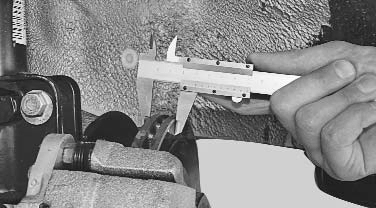
To prevent emergency situations, car manufacturers denote the nominal and minimum thickness of the element on the most disks in the form of two marks. It is worth saying that manufacturers indicate the minimum thickness with a reserve, increasing the indicators slightly.
In order to check whether the brake discs are on your vehicle with fake, take the brake disc and look at it carefully. Here you should see two digits, the first of which will denote the initial thickness of the element, and the second is the minimum permissible indicator. If you have not seen any designations on the brake disc, it means it is simply fake, that is, fake.
Brake disk wear, causes of wear
You can select a number of symptoms of the brake disk worn:
- If the braking is felt when the steering column and vibrations are felt all over the machine. Most often such signs can be seen in case of emergency braking. In this situation, it is necessary to complete the car diagnosis, as such problems are capable of occupy not only as a consequence of the failure of the brakes.
- If braking is accompanied by outsided sounds, predominantly a pisk. However, this may indicate the wear of the brake pads, and not disks.
It is not necessary to slow with the replacement of the item, since when it continues its use, the manufacturer may refuse you in warranty service.

In addition, the use of worn brake discs can lead to a variety of negative consequences. For example, when braking by the driver, friction force arises between the disk and the block. Warring up to the maximum temperature, the element may be deformed that the failure of the entire brake system fails.
If the disk thickness is less than the minimum allowable, it is able to lose its strength, which threatens the split element. Such a phenomenon can only be seen when braking. The impossibility of stopping in a particular situation can lead to disastrous consequences.

The principle of operation of the brakes is quite simple - when the motorist presses the pedal, the pressure changes, on both sides of the brake disc clamp pads that stops its rotation. With minutes and clamping to a stop disc pads create vibrations with frequencies that can sometimes coincide frequencies perceivable by the human ear. And as the wheel arch on the design operates on the principle of sound amplifier, whistling or squeaking, which we hear is even louder. In fact, the whistle brake is always present, but we do not always hear it, because it is usually the frequency is not perceived by the human ear.
The main cause of brake disc wear, as has been said above, it is the style of a motorist driving. Brake discs and pads are subject to great stress, as virtually extinguish the kinetic energy of a moving vehicle. The degree of wear determines not only the distance covered, but driving on poor road surfaces. In addition, the wear of the brake discs affects several factors such as the quality of the disc itself. It is worth noting that the average life of the brake discs at the optimal manner of driving is about 150 thousand kilometers.
The front brake discs, requiring replacement of front brake discs
Experienced motorists advised to replace the front brake discs every 50-60 thousand kilometers, and do it at once, complete with pads. However, some do not agree with this and argue that each driver's driving style is different, this guide mileage in such cases properly.

In any case, the front brake discs must be replaced if:
- If the brake discs are worn down to the minimum allowed that is provided by the manufacturer.
- If the disc is deformed by the impact.
- If you have found mechanical damage that can not be eliminated by the bore.
Rear brakes when you need to change the rear brake discs

The rear brake discs should be replaced when you notice that the braking distance is increased, the vehicle goes to one side when braking, reduced the level of brake fluid, brake pedal became soft, and if they are worn down to the minimum allowed, deformed or damaged.
Brake system diagnostics
Master service centers or stations are able to determine the condition of the brake disc at a glance, as well as, to say whether further possible to use a brake disc or should be made to replace it. However, you can define the state of the brake disc by yourself. For this measure the thickness of the part by using an ordinary caliper. However, one should consider the fact that the thickness in different sections of the element may vary as a result of alignment errors.
After checking the disc brake caliper thickness should be compared with it and initially recommended parameters. They can be found in the vehicle owner's manual or on the manufacturer's site on the Internet. Typically, there can also be found and estimated useful life of the element, and understand how to effectively and efficiently work for you brake system.
It is worth noting that the size of the chips and cracks should not be more than 0.01 mm, and the difference in the thickness of the worn-out and a new disc should not be more than two or three millimeters. Otherwise, you can safely talk about the significant deterioration of the brake disc, which means that the braking system is not reliable.
Faulty brakes - a threat to life
The brake system requires regular and careful attention to itself. Operate the vehicle with a faulty brake system is forbidden, because you can hurt not only themselves but also other participants in traffic.

collateral security for your car and for yourself will become a regular diagnosis of the brake discs and their timely replacement. In addition, you must regularly pay attention not only on the brake discs and brake pads on the brake and the entire system as a whole.
Tips of professionals
Proper vehicle is a guarantee of a pleasant and successful trip. It is not necessary because of the desire to save money on the road to risk their lives and the lives of the passengers that you carry. If you change your driving style to a more peaceful, then it will be able to extend the life of the braking system. However, at the first sign of trouble, it is necessary to diagnose and repair or replace broken parts.
Related Materials
- Stove 2110, bad warm stove 2110, VAZ 2110 heating system, repairing the heating system VAZ 2110 with their own hands
- VAZ 2114 stove blows with cold air, stove 2114, bad warm stove VAZ 2114, device and repair of heating VAZ 2114 do-it-yourself, removing the stove VAZ 2114
- How to subdominize the car. How to put a jack. Types of jacks for cars.
- VAZ 2109 Fuse Block, VAZ 2109 Fuse Block Carburetor, VAZ 2109 Fuse Block Injector, Old VAZ 2109 Fuse Block, VAZ 2109 Fuse Block, VAZ Fuse Block 2109
- Car exhaust gas catalyst, faulty catalyst, pluses and cons of the catalyst, how to change the catalyst on the planeencitel
- Stove blowing cold air VAZ 2114, badly blowing the stove VAZ 2114, why badly blowing the stove VAZ 2114
- How to find out the owner of the car by the number of his car, check the car by the number of the traffic police machine, check the car by the state number of the car for free
- How to choose Used tires, Useful Tips
- Winter car road, pressure in passenger car tires in winter, good battery for the car in winter, whether to warm the car in winter
- In winter, the car is poorly started. How to make a car in winter, do you need to warm up the car in winter, useful tips
- Economy fuel consumption machines, the most economical car consumption
- Tires brands for passenger cars, labeling of car tire labeling, residual passenger car tire protector, how to pick a tire on a car brand, car tire tread pattern
- Working transmission operation, mechanical gearbox clutch work, driving with manual gearbox, useful tips
- Rear beam Peugeot 206 sedan, rear beam device Peugeot 206. Rear beam Peugeot 206 Malfunction, repair of the rear beam Peugeot 206
- Diesel fuel in winter, additive for diesel fuel in winter, how to choose the best diesel fuel
- Diesel winter does not start. How to start diesel in winter, heating diesel in winter.
- Japanese bridgestone tires, winter studded bridgestone tires, bridgestone tires brand
- Tire marking decoding for passenger cars, labeling wheels, how to choose the right tires on the disks
- Diesel engine in winter, launch of the diesel engine in winter, what oil to fill in a diesel engine in winter, useful tips
- LED backlight of the car, the backlight of the bottom of the car, the backlight of the legs in the car, the backlight in the door of the car, the backlight of the car is fine
- Recovered tires, bus tire, restored tire protector, can I use them
- Choose winter tires, which is a winter tires, which pressure in winter tires should be marked with winter tires, how to choose the right winter tires, the best winter tires 2019
- Steering rail rail, knock of steering rack, reasons for the knock and repair of the steering rack do it yourself
- Cameless car tires, a set for repair of tubeless tires, repair of the cannon-free tire do it yourself
- Russian tires, Russian tires Winter, Russian All-season tires, Voronezh AMTEL tires, Tires "Matador Omsk Tire", Kama-tires are world-class bus
- How to open a car without a key. Lost the key from the car what to do, the key from the car inside the car
- Silent tires, quiet winter tires, quiet studded bus, which tires to choose, overview tires
- Tires and safety, safety of the bus, why it is necessary to constantly monitor car tires
- Rules of safe driving of the car in the rain and slush, safe driving of the car for beginners
- Rust converter which is better for cars, rust converters to choose how to use rust transducer, professionals
- Polishing the body of the car do it yourself, how to choose a polishing paste, useful tips
- Engine durability, engine life, how to extend engine life
- Knock in the car. Knock when moving the car. What can knock in the car. How to determine the cause of the knock.
- ABS car, what is ABS car, ABS system malfunction, ABS diagnostics
- Overtaking a car when you can start overtaking a car, rules of traffic rules
- Fuel pump VAZ 2110, VAZ 2110 gas station scheme, VAZ 2110 fuel pump device, VAZ 2110 gas station repair,
- Automotive antennas for radio, automotive antenna device, car antenna do it yourself
- Front suspension Kalina, device front suspension Kalina, knock in front suspension Kalina, repair of front suspension Kalina
- Shock absorber Oil, best oil shock absorbers, pumping oil shock absorbers, how to properly pump oil shock absorber
- Clutch malfunctions, touches clutch, causes a clutch malfunction, how to eliminate
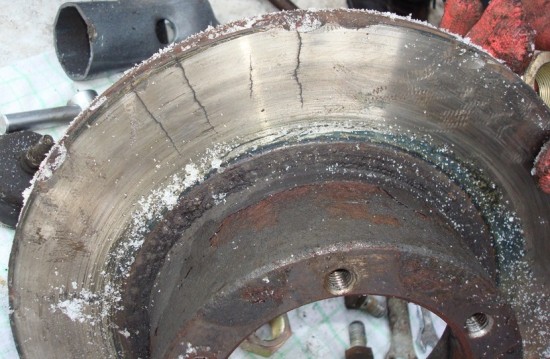
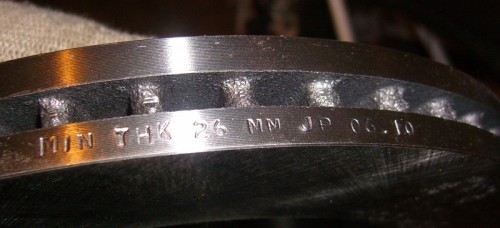
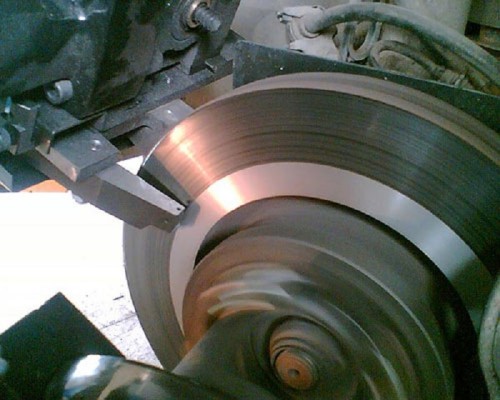
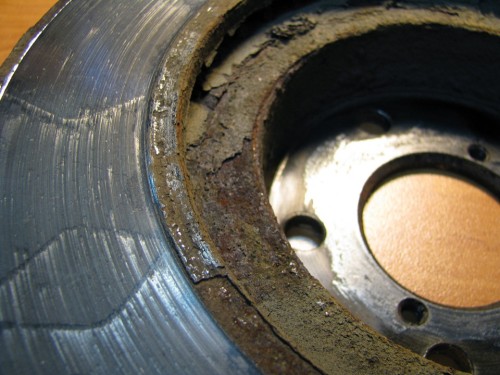
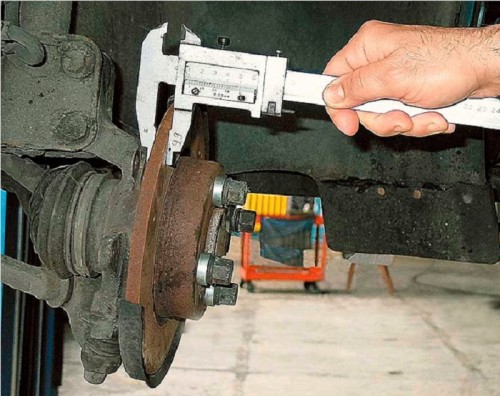






Also should not be abused by a gate. It is better to replace brake discs.